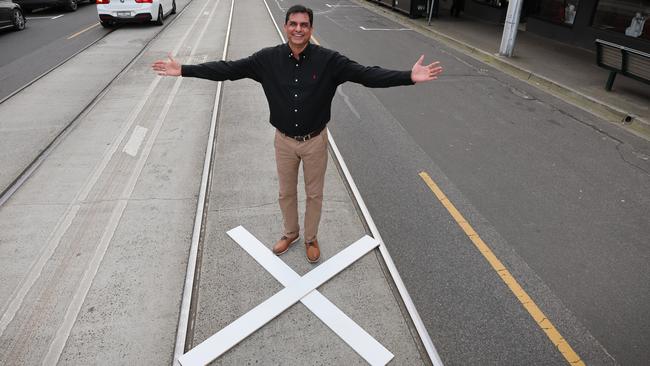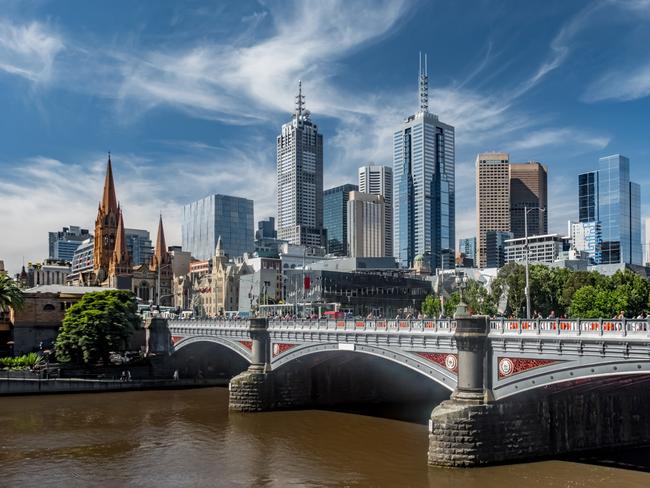Indian restaurant Tandoori Den Camberwell named as centre of Melbourne
A popular Indian restaurant in Camberwell has been revealed as the centre of metropolitan Melbourne amid a major population shift. See where X marks the spot.

Leader
Don't miss out on the headlines from Leader . Followed categories will be added to My News.
The heart of Melbourne is often thought to be the mighty MCG, or possibly the CBD’s laneways teeming with bars, music venues and cafes.
But demographically speaking, the beating heart of Melbourne is a homely Indian restaurant close to the Camberwell Junction, famous for its chicken tikka and rogan josh.
Tandoori Den, which opened 45 years ago, can add another impressive item to its menu after demographers from .id (informed decisions) calculated the demographic centre of metropolitan Melbourne using the 2021 population census data.
Tandoori Den owner Gaurav Khanna said being told his restaurant was ‘the centre of Melbourne’ came as a “great surprise”.
“It’s not something we ever thought about, we just really love the area here,” he said.
“It’s very central, green and leafy here. There’s a lot of character to the area and such a well balanced neighbourhood which makes you feel really good about the place.
Mr Khanna, who has lived in the area for more than 30 years, said he has “definitely noticed” a lot more people in Camberwell over the past few decades as the suburb slowly became the centre of the city.

According to the .id data the centre of Melbourne has shifted about 200m from where it was in Riversdale Rd in 2016, with demographer Nenad Petrovic predicting this trend will continue as the population in Melbourne’s west continues to grow
“The latest shift between 2016 and 2021 towards the southwest is a further indication of population growth in parts of town such as Wyndham and the CBD/inner suburbs pulling the centre in that direction,” he said.
“As more future growth occurs in the cities of Wyndham, Melton, Whittlesea, Hume … we anticipate the centre will shift further to the west.
The sharp western turn comes after the population centre moved towards Melbourne’s southeast after significant development in the city of Casey and Mornington Peninsula.
“By the early 2000s, this trend had altered as greenfield land in the eastern and southeastern suburbs became scarce,” Mr Petrovic said.
“From the turn of the century, growth in Greater Melbourne’s western and northern suburbs, as well as more high-density development and population growth in the inner suburbs and CBD of Melbourne shifted the population centre towards the west.”
Wyndham – which includes suburbs such as Tarneit, Point Cook and Werribee – is projected to be home to an extra 175,000 by 2036.
Likewise, nearby Melton, it is tipped to be home to nearly 350,000 residents within the next decade.
Monash University demographer Dr Elizabeth Taylor described Melbourne “one of the most rapidly growing cities in the world”.
“Melbourne is unusual in how far it’s spreading and how quickly,” she said.
“If you used to go up the Hume Highway you’d get up to Craigieburn and it would be considered rural and now that’s all being built up as suburban.”
Since 2002, Metropolitan Melbourne’s urban growth boundary has expanded by more than 55,000ha to include parts of Cardinia, Casey, Whittlesea, Mitchell, Hume and Wyndham.
That boundary now extends past Wallan in the north and Melton in the west.
Metro Melbourne’s population — rough 5.1 million and fast approaching Sydney — is projected to pass 8 million by 2051, with western municipalities expected to play a major role in this spike.
Dr Taylor said Melton has experienced one of the biggest demographic shifts, going from a “satellite city” to a fully-fledged part of metropolitan Melbourne.
“If you look at Melton, which was meant to be self-contained, not contiguous with Melbourne but part of the metropolitan area, that has really changed,” she said.
“It’s between Melton and Caroline Springs where the growth is most intense now.”



